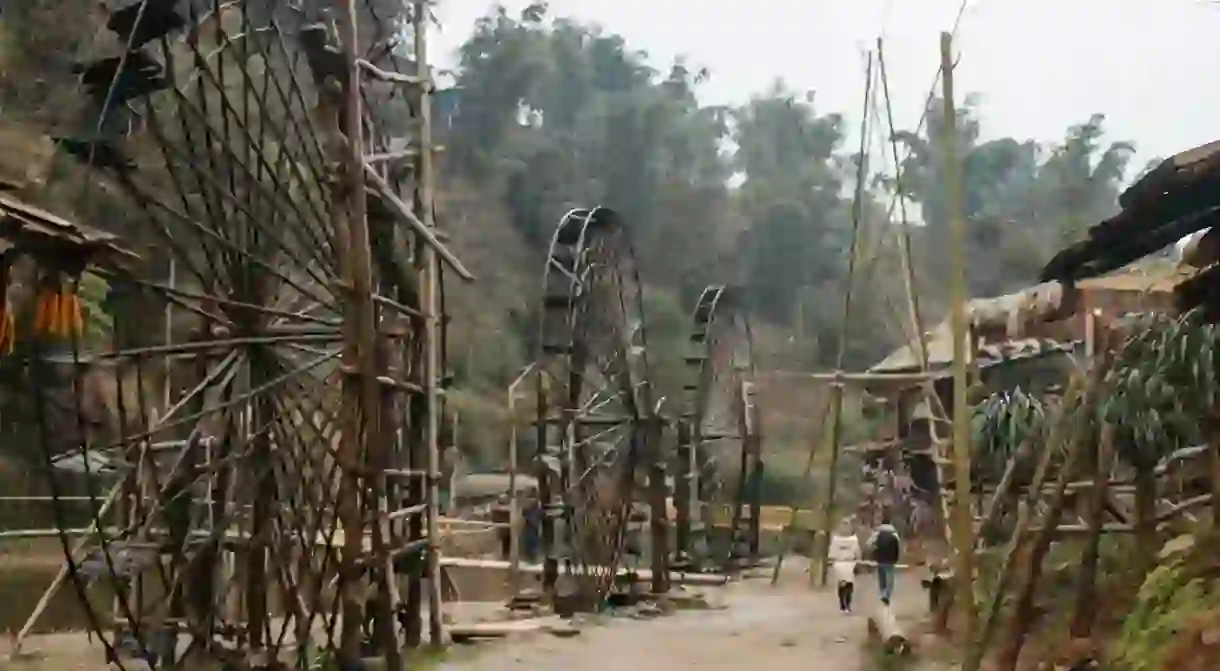Exploring Cat Cat Village in Sapa, Vietnam

Sapa is a hill station in the north of Vietnam, known for its beautiful terraced rice fields, lovely and welcoming ethnic minority tribes, and for housing the tallest peak in Indochina, Mount Fansipan. It’s also the premier trekking base of Vietnam, growing more and more popular each day.
Most tourists are not interested in the city—rather, they love exploring the tiny villages scattered around it. A particularly famous village is called Cat Cat, attracting tourists from all over the world for its distinctive customs and practices that have remained in the area, despite international influence.

Cat Cat Village is nestled at the bottom of Muong Hoa Valley, about two miles (three kilometers) from Sapa town. This village was formed in the 19th century, after various ethnic H’Mong and Dzao families came together from other mountainous areas in northern Vietnam. They started cultivating rice and corn in the region, as well as weaving fabric and creating handicrafts to get by.

Heading down to Cat Cat Village requires following one of the main Sapa roads until the trail begins. If you continue following this Cat Cat trail, you will start heading towards Mount Fansipan on the most difficult of the three famous trails. The trip is picturesque and stunning, but rather arduous. Luckily for you, getting to the village isn’t as difficult, as you will mostly come across paved paths and steps.
At some point on the road, you will come across a ticket center for Cat Cat Village, and this will only cost you 25,000 VND (1 USD). The money goes towards local families who have opened their homes so you can explore and get to know their culture. At the entrance, you will also be handed a map of the trail.




You can get a glimpse of the residents’ traditional lifestyle by walking into any of the houses that are open for display. These are called exhibition houses, and are far from your traditional museum, but the aim is the same: to collect and display materials of cultural significance.




As you continue on the trail, you will see a number of mills on the side of the road. These mills are powered by flowing water. Throughout the trail, you will see how people have used the flowing water to their advantage.

Elaborate water wheels made from bamboo use water power among other things to pound rice.



Cat Cat waterfall is one of the main attractions. You can dip your feet in the cool water if you are able to jump over the boulders.

In Sapa, corn wine and rice wine is popular. To make wine, corn is boiled in hot water for a long time until the kernels break off the cob. After cooling the broken kernels, they are then mixed with the yeast of hong my trees. This fermentation process can last up to six days. The wine is usually poured into recycled water bottles and sold in markets for cheap prices. The wine is often referred to as “happy water.”


Shops dot both sides of the Cat Cat trail. These shops sell a range of items, from packaged and fresh food, to handicrafts and clothes. You will see women stitching colorful pieces of brocade while children play around with pets or even livestock that are temporary pets.


Hemp, cotton, and linen are collected from the forest to use as material for these clothes, and the silk from silkworms is used for embroidery. The colors are also made naturally—yellow from turmeric, black from a local leaf, red and brown from the rind of local leaves, and blue from indigo leaves. Cat Cat is known for its indigo dyeing technique that you can observe as you walk around.
Many residents of Cat Cat Village are also skilled at creating gold and silver jewelry. You can find these sold everywhere in Sapa town.




Walking through the village gives tourists a chance to glimpse into the daily lives of the local people and take part in traditional activities. You can also purchase some traditional souvenirs and handicrafts right from the craftsmen.
The overall experience is wonderful and not too touristy. Find yourself a tour guide who is willing to show you around Cat Cat for a fair fee. This way, will you understand what is going on, and not miss anything important.














